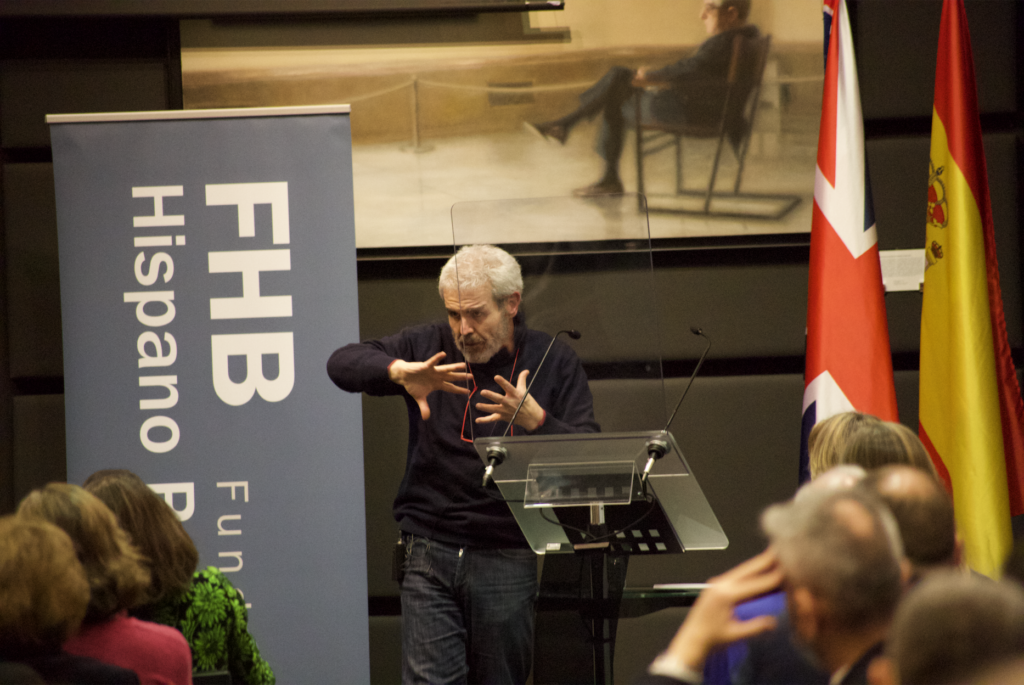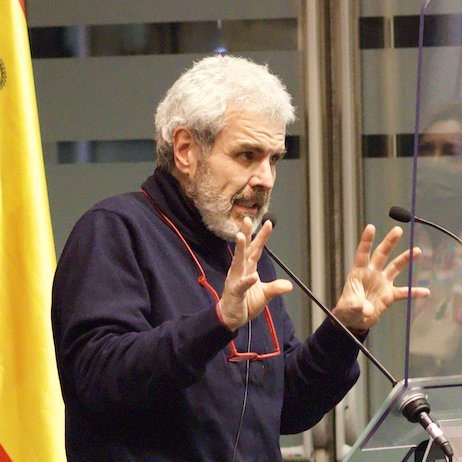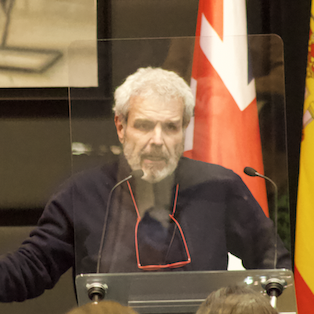FHB interview with LORENZO CAPRILE
Lorenzo Caprile is not impressed by influencers because he firmly believes that the pioneer in this field was Eugenia de Montijo. And, from that time, many things have happened in the world of fashion. For the same reason, he is not impressed by “fake news” or “storytelling” because “they have always existed”. In addition, he also believes that over the years the fact that “fashion has always had to do with power” has been a constant. In an FHB conference he explained the origin of the fashion concept at the end of the 18th century and its beginnings with Charles Frederick Worth.
ISABEL AIZPÚN
(Translated by ANA LUCÍA CERDÁN GALLARDO)
May 2022
We begin this interview in the middle of the Ukrainian War, in the middle of horror, how do tragedies affect creative people who are dedicated to design?
It’s terrible but I try not to let it affect me because, unfortunately, I can’t afford it. The last two years have been tough for ateliers like mine. We are almost heroes who survive with a lot of hard work and effort, and these things are completely out of our control. If I close my business, fifteen families are directly affected as well as many others indirectly, including the suppliers. It is not that they depend on me, but we are part of a chain, so we need to strengthen mutual cooperation.
Are there factors that can affect creativity?
It is a question of professionalism rather than creativity. I cannot allow myself to be influenced by everything that happens because I would have gone out of business already…Now, it is this war. Before we had come through the Covid, the institutional instability that we have suffered in Spain for many years, the labour reform… All that affects us as SMEs and more so in a sector like mine, which is the seasonal bridal sector. I don’t have the same volume of work in May or July that in December. We are juggling like other entrepreneurs.
Is it a kind of job that allows you to isolate yourself from the surrounding?
It’s not necessarily the case; there is a lot of myth around this profession. I’m cooped up in my atelier with fifteen people… If this is called isolation… It’s a myth that Mr. Worth invented and promoted. It is just a legend, it doesn’t exist.
There is no creative myth, however you do represent one of them for many people…
As Picasso said, let inspiration catch you working. It’s another myth, that of inspiration, because you must solve everyday problems. Every day there is a new melodrama and anyone who is dedicated to this profession knows it…. A lady who doesn’t like a dress fitting, another one who changes her mind, other who cancel an order, a girl with the finished wedding dress who regrets getting married, a million things that don’t let you to isolate yourself.
How did you start to like dressmaking?
I guess because of my family, an Italian family with women with a lot of character, two grandmothers with opposite personalities, different worlds, but also two different models of elegance; different but complementary. One of my grandmothers with a strong northern style, very austere, Armani style, so to speak. On the other hand, my maternal grandmother had a more Mediterranean style, because she has lived in the colonies, and had more tendency toward prints and colours. And so is my mother who always has been a very stylish womanand has dressed in the best boutiques. Besides I have four sisters… I guess all of that played a role.
Your conference at the British Hispanic Foundation on Charles Frederick Worth has presented a figure maybe unknown for public, although surely a prominent figure in fashion world for being the first one to sign his designs as was done with painting or with other arts.
Yes, he was the pioneer of what we know today as author design, the fashion designer as synonymous with great artist. The idea of “creative” we were talking about before was something that he promoted when it was very far from real. He did not start as a tailor, nor as a cutter, nor as an embroiderer; he started as I think everyone should start in this industry; as a salesman, as a commercial, and there he realized that everything is “storytelling,” as we would say today. Everything was a storytelling, to wrapping the lady in a fantasy.
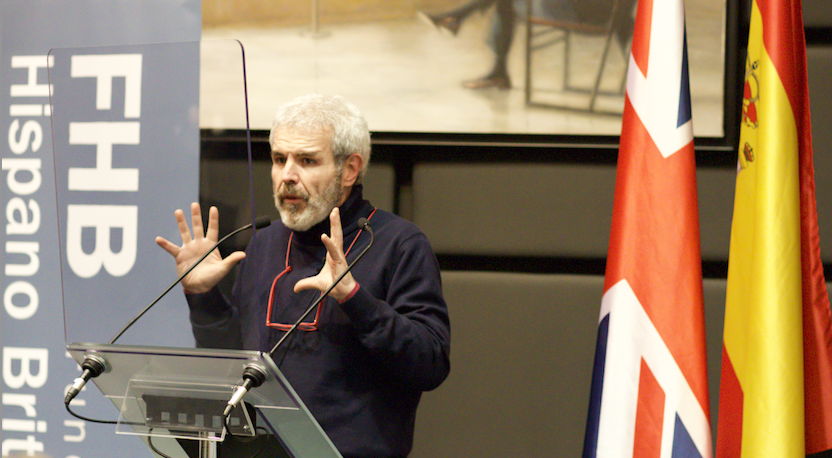
Was he a smart one, a genius?
He was a genius at that, at the aggressive marketing.
It included doing one or two seasons each year, which had to be very innovative.
He invented the season concept and, above all, the parades concept, which did not exist. The presentations were not like the ones we have today. He also had his cabinet fashion-model, hired models from the fashion house, which could be seen from Tuesday to Thursday at a specific time…The Worth house used to show the dresses worn by cabinet fashion-model, you could touch the fabric, see the tailoring, to get an idea. That is the origin of today’s fashion parades. He was the first one to do it.
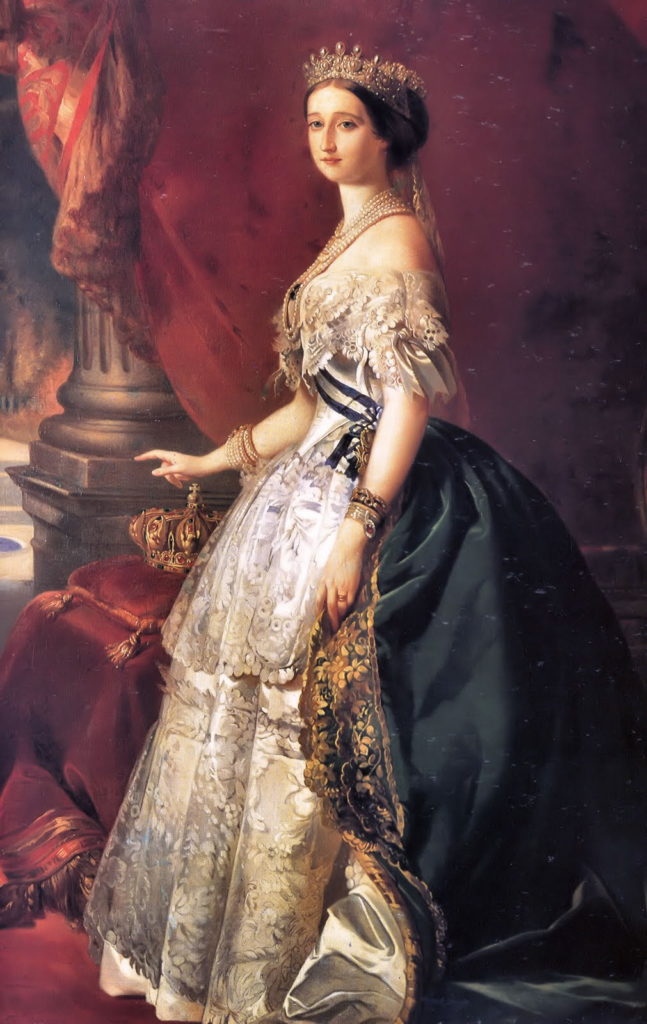
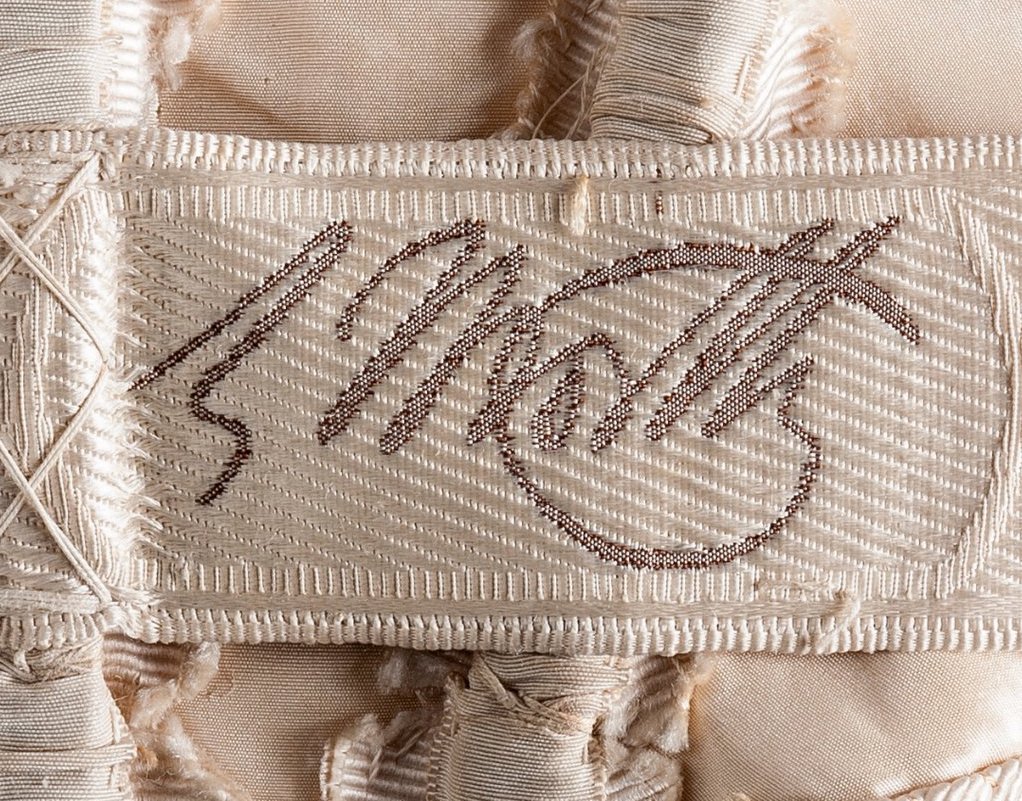
Signature of English dressmaker Charles Frederick Worth 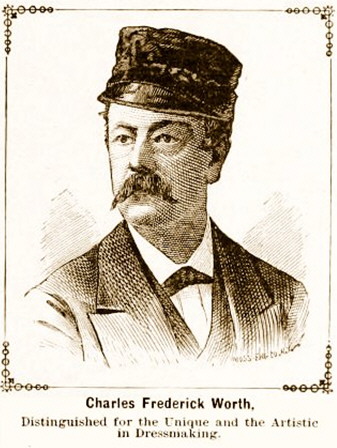
Do influencers really have much to do with what is considered on trend?
Yes, but such a phenomenon has always existed. It’s like the fake news. These days we call them differently, but they have always existed. The black legend, for example, is the biggest case of fake news in the history of humanity with the famous William of Orange. Right now, in order to prepare the conference, while reviewing Marie Antoinette’s life, I have been able to remember the fake news and the smear campaign against her. It was said about her that she had even committed incest with her own son. Nowadays, these people who, let’s say, serve as a model for the rest of society, we call them influencers and it seems that we go crazy for them, but it is something that has always existed. The other main protagonist of the conference, Eugenia de Montijo, was a great influencer. What happens is that this phenomenon has changed all the rules of the game. There was always a cool girl who set the trend in the neighbourhood whom everyone wanted to imitate and was followed to the clothing store, she would be a sort of the current influencer… but now this phenomenon has been multiplied by 3,000 million worldwide. There was always one who was the first to go to London, the first to wear a miniskirt, the first to cut her hair, to get a tattoo… The others imitated her, but now it has been multiplied by a million and, as there are plenty of money involved it has been professionalized, has been commodified and has lost part of that freshness.
Do they match your tastes?
To tell the truth, I don’t know because I don’t follow them. Some of them have come to visit the atelier, peeked, and then have gone to other ones. Now it seems that we are very much in tune with one of them. He wanted to come to the atelier and in my ignorance, I said “alright let him come”… then I found out that he was a star and had many followers. Well, I’m grateful… but it doesn’t keep me awake at night…
Your book on style has been reissued. Can you remind us of some guidelines to get a style if there is only one?
For me, style is synonymous with intelligence, with common sense: don’t wear something you know doesn’t suit you. If you’re going to a North Pole wedding, don’t wear a sandal; If you go to a baptism in Pedraza, don’t wear a stiletto heel.
That’s how it is for me, and, what I try to highlight in the book is that everything is eventually trial/error, as it is in any discipline. One thing is that “allure” with which someone can be born, like being tall or thin, that can be one in a million, but having a certain style or a certain personality is something that one goes gradually cultivating. You are not born knowing how to cook, nor knowing English, nor drawing. You can have natural inclinations, but if you don’t cultivate that, making mistakes and enhancing it, maybe you’ll be well dressed by chance once. No one is born knowing that.
Nobody becomes a reference in fashion by chance…
Fashion is closely related to power, to economy. Fashion is politics. We never dress randomly. Among all the films that deal with fashion world, the one that best reflects our industry is The Devil Wears Prada. That scene where Meryl Streep gives a lesson about what fashion and fashion industry is to fellow Anne Hathaway, who snickers while they’re choosing clothes and preparing a photo shoot, because everything seemed insignificant to her, sums it all up very well. Meryl Streep notices and explains her the whole process and all the repercussions behind the unattractive blue sweater she’s wearing and tells her “That blue sweater you’re wearing today” … as if to say: you don’t care about none of this, that color… and he begins to make a storytelling of the origin, the importance and the consequences of using that color and that product… the reality is that, in fashion, nothing happens by accident, nothing.
All of this requires a lot of dedication, but today’s woman has less time.
What happens is that women like to change a lot but not the men. We are more primitive, more basic. The point is that you say something like that and you are referred to as a fascist. Of course, we all must have the same rights and opportunities, but we are completely different, we have nothing to do.
Does your atelier design for men?
When I make theater clothes, yes. Because my atelier is a traditional one. The theater clothes were exciting, like everything in this life. When you start, you take it with great enthusiasm. After that the illusion is replaced gradually by trade and professionalism; that happens in everything in life. It’s like when you fall in love, you have four or five years of passion and, later, there is affection, coexistence… human beings are like that.
Have you ever refused to serve a woman, to a costumer?
No, despite the black legend that surrounds me and my atelier, no. The thing is that you even don’t get to say no, sometimes you realize that there is no feeling and it’s not even necessary to say no. If something like this happens, you seldom go through with it. In the end, this is a very long process, very intimate; after all you get naked in front of acquaintances both metaphorically and really, which, if there is not a certain skin chemistry, no matter how hard you force, it does not work.
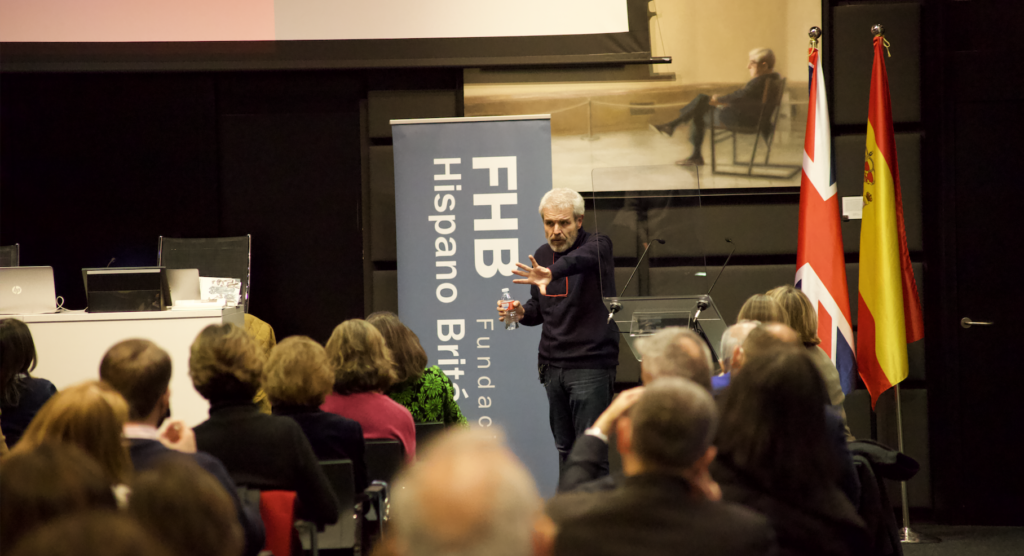
A customer arrives, a woman who wants one of your creations… At some time, even if creativity come to you while you are working, the idea of what that creation should be comes up…
In my case, moments of inspiration arise when the customer is in front of me. Some of them recognize or appreciate that spark of genius and with others you have to resort to storytelling and find arguments to try to take them into your own sphere. It is also true that, after so many years of experience in the atelier, and I am not saying it is infallible, but when a woman enters you already know what to do.
Thus, each dress is a result highly shared with the client
It is a teamwork between the atelier, me and the costumer, my whole team. Naturally it is a work made with the client in which problems may arise… lot of the final success depends on them.
Traditionally, are there similarities in fashion between the United Kingdom and Spain?
With respect to this conference, the concept of fashion begins at the end of the 18th century. When we study the history of clothing there is a wonderful period which is that of the Spanish style that coincides with the explosion of the Greatness of Spain; I am referring to Carlos V, Felipe II, Felipe III. Indeed, at that time there is a tremendous connection with England, a kind of love/hate relationship with a coming and going of fashions and modes, of things that were originated here, taken there and distorted, especially under the reign of Elizabeth I. The more you hate something, the more it attracts you thus many of the iconic images of Isabel I are the Spanish costume but extravagant and modified, adapting it to her idea of royal scenery. That is a fascinating empire with many anecdotes and many links, as it is said today. Let’s not forget that Philip II was married to Mary Tudor. He was living in London where there were many such linkages. The daughter of the Catholic Monarchs, Catherine of Aragon, was the first wife of Henry VIII and it was the most durable marriage of the King, 22 years. In fact, originally the famous English wool for the Catherine of Aragon dowry was transported in a lot of boats carrying a herd of merino sheep. They were crossed and the famous English wool together with that genetic branch of Spanish merino passed to Australia. The origin of the English wool quality comes from that dowry.
